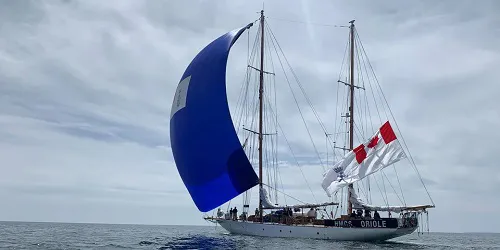-
Cruise Line InformationCarnival Cruise Line Cruising Guide & Tips Alcohol Prices & Selections Unlimited Soda Program Cheers! Beverage Program Deck Plans Dry Dock Schedule Menus Food Recipes Beverage Recipes Secret Decks What's Included? What's Extra?
Norwegian Cruise Line Cruising Guide & Tips Deck Plans What's Included? What's Extra?
Royal Caribbean International Cruising Guide & Tips Food Recipes Beverage Recipes Menus
COVID-19 Cruise Line Bankruptcies -
World's Notable ShipsWorld's Largest Cruise Ships World's Largest Military Ships World's Longest Service Cruise Ships World's Most Recent Cruise Ship Decomms World's Newest Active Cruise Ships World's Oldest Active Cruise Ships World's Oldest Active Military Ships World's Upcoming Cruise Ships COVID-19 Cruise Ship Decommissions
-
Guest RegisterIf you are reading this it means you have not yet registered. Please take a second to REGISTER (it's FREE). You will then be able to enjoy all the features of Cruising Earth.
You should upgrade or use an alternative browser.
HMCS Oriole #2 World's Oldest Active Military Ship - Cruising Earth

HMCS Oriole - Royal Canadian Navy
#2 World's Oldest Active Military Ship
HMCS Oriole is currently ranked #2 in the list of the World's Oldest Active Military Ships.
2
In Service:
1921
(104 Years of Service)Ship StatisticsTrack HMCS Oriole
In Service: June 04, 1921
Gross Tonnage: 93 GT
Length: 102.00 Feet
Beam: 19.00 Feet
Speed: 8.0 knots / 9.2 mph
Complement: 24
HMCS Oriole Historical Brief
Introduction
HMCS Oriole is the longest-serving commissioned ship in the Royal Canadian Navy (RCN). As a sail training vessel, it has played a crucial role in the development of seamanship skills for naval cadets and officers. The Oriole’s rich history spans over a century, from its construction in the 1920s to its current status as a beloved and iconic part of the RCN. This historical brief provides an overview of the Oriole’s construction, early years, service with the RCN, and its ongoing role in naval training and public outreach.
Construction and Early Years (1921-1940)
HMCS Oriole was originally built as a private yacht for the prominent Gooderham family of Toronto, who were known for their involvement in the distilling industry. The ship was constructed at the Dominion Shipbuilding Company in Toronto and was launched in 1921. Designed by George Owen, a renowned naval architect, the Oriole was built as a racing and cruising yacht. The vessel measures 102 feet (31 meters) in length overall, with a beam of 19 feet (5.8 meters) and a draft of 10 feet (3 meters).
The Oriole's design as a ketch rigged sailing vessel, featuring two masts and a combination of fore-and-aft sails, made it well-suited for both racing and leisurely cruising. The ship's elegant lines and impressive sailing capabilities quickly made it a prominent fixture in yachting circles.
In the 1920s and 1930s, the Oriole participated in various yacht races and regattas on the Great Lakes. The ship's owners enjoyed its performance and comfort, and it became a symbol of their wealth and social status. During this period, the Oriole established a reputation for its seaworthiness and elegant design.
Acquisition by the Royal Canadian Navy (1941-1951)
With the outbreak of World War II, many private vessels were requisitioned by naval forces for wartime service. The Oriole was no exception. In 1941, the Royal Canadian Navy acquired the vessel to serve as a training ship for naval cadets. The Oriole's robust construction and sailing capabilities made it an ideal platform for training purposes, particularly in the areas of seamanship and navigation.
Renamed HMCS Oriole, the ship was commissioned into the RCN and began its new role as a training vessel. During the war, the Oriole was used to train naval cadets in fundamental sailing skills, navigation techniques, and shipboard operations. The hands-on experience provided by the Oriole was invaluable in preparing cadets for service aboard larger naval vessels.
Post-War Service and Modernization (1952-2000)
After World War II, HMCS Oriole continued to serve as a training vessel for the Royal Canadian Navy. The ship's role in training new generations of naval officers became even more prominent as the RCN recognized the enduring value of traditional seamanship skills in the modern navy.
In the post-war period, the Oriole underwent several refits and upgrades to ensure its continued operational effectiveness and safety. These upgrades included improvements to the ship's rigging, hull, and onboard systems. The goal was to maintain the Oriole's historical character while ensuring it could meet the demands of modern naval training.
The Oriole's training missions have taken it to numerous ports across Canada and beyond. The ship has participated in various naval exercises, public outreach events, and maritime festivals. These activities have helped to raise public awareness of the RCN's mission and heritage, while also providing valuable training opportunities for cadets and officers.
One of the notable periods in the Oriole's history occurred in the 1980s when the ship underwent a significant refit. This modernization effort included extensive work on the ship's hull, rigging, and mechanical systems. The refit ensured that the Oriole could continue to serve as a training vessel for many years to come.
Cultural and Diplomatic Significance
HMCS Oriole is not only a functional training vessel but also a symbol of the Royal Canadian Navy's rich maritime heritage. The ship's elegant design and historical significance have made it a beloved and iconic part of the RCN. The Oriole's participation in public events and maritime festivals has helped to promote the RCN's mission and values, while also fostering goodwill and international cooperation.
The Oriole's involvement in events such as the annual Halifax International Fleet Review and the Canadian Navy Centennial celebrations has highlighted its cultural and diplomatic significance. These events bring together naval vessels from around the world, promoting mutual understanding and collaboration among seafaring nations.
The Oriole's presence at public events and festivals also provides opportunities for Canadians to connect with their navy and learn about its history and traditions. The ship's open house events and public tours have allowed thousands of visitors to experience the Oriole's unique charm and historical importance firsthand.
Recent History and Ongoing Role (2001-Present)
In the 21st century, HMCS Oriole continues to serve as an active training vessel for the Royal Canadian Navy. The ship remains an essential platform for developing the seamanship skills of naval cadets and officers. The Oriole's training missions take it to various ports along the Canadian coast and beyond, providing cadets with valuable hands-on experience in sailing and navigation.
The Oriole's ongoing role in public outreach and education is also significant. The ship's participation in maritime festivals, public tours, and open house events helps to raise awareness of the RCN's mission and heritage. The Oriole serves as a living link to the past, connecting Canadians with their naval history and traditions.
One of the notable recent developments in the Oriole's history was its participation in the 2017 Tall Ships Rendezvous. This event, held to commemorate the 150th anniversary of Canadian Confederation, brought together tall ships from around the world for a series of public events and celebrations. The Oriole's participation in this event underscored its enduring significance as a symbol of Canadian maritime heritage.
Preservation and Future Prospects
As HMCS Oriole approaches its centenary, efforts to preserve its historical integrity and operational capabilities continue. Regular maintenance and periodic refits are essential to ensuring the ship's seaworthiness and safety. These efforts are also crucial in preserving the Oriole's legacy for future generations of naval cadets and the public.
The future prospects for HMCS Oriole are promising. The ship will continue to play a vital role in the training of RCN officers, providing them with the skills and experience necessary for their careers. Its participation in international events and cultural exchanges will also endure, promoting Canada's maritime heritage and fostering global understanding.
The renewed interest in traditional sailing vessels and their role in naval training underscores the enduring value of hands-on seamanship training. The Oriole's continued service is a testament to the importance of preserving maritime traditions and the skills associated with sailing. The ship's combination of historical charm and modern functionality makes it a unique and invaluable asset to the Royal Canadian Navy.
Conclusion
HMCS Oriole stands as a testament to Canada's rich maritime history and its commitment to training and excellence. Since its acquisition by the Royal Canadian Navy in 1941, the ship has trained countless naval cadets, participated in significant historical events, and promoted cultural exchange and diplomacy around the world. As it continues to sail the world's oceans, the Oriole remains a symbol of Canada's enduring maritime legacy and its dedication to the values of seamanship, tradition, and international friendship.
The Oriole's historical significance, elegant design, and ongoing role in naval training and public outreach make it an important and cherished part of the Royal Canadian Navy. As it approaches its centenary, the ship's legacy will continue to inspire future generations of sailors and maritime enthusiasts, preserving Canada's rich nautical traditions for years to come.
Cruising Earth Website Updates
The cruising industry is ever changing. The information contained on this site is updated frequently and kept as accurate as possible. If you believe any of the information is outdated, inaccurate, or you believe you have additional information that could be useful to other cruisers, please post the updated/new information in our Community Forums. Please use this same link to post any questions you may have.

